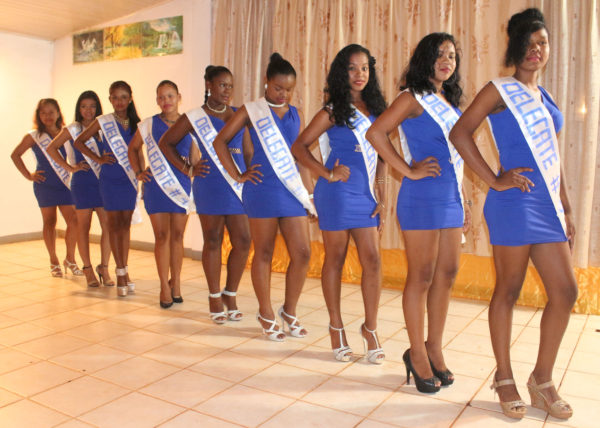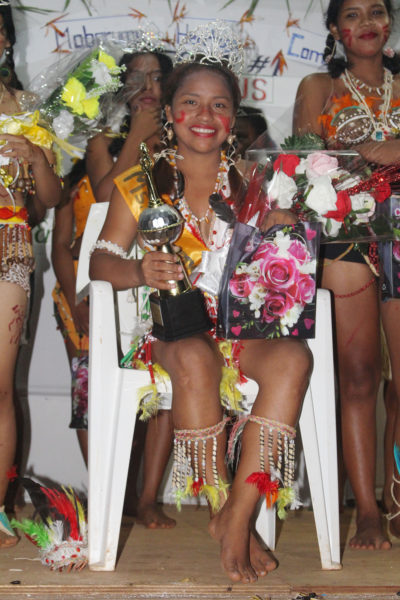Ten years after it was launched the Miss Region One Indigenous Heritage pageant is said to have helped to build the self-esteem of young women in the region and its organiser believes that it has even contributed to the reduction of teenage pregnancy in the various communities.
While many may thumb their noses at pageants, organiser of the October 1 pageant, Keisha Benedict boasted to The Scene—shortly after Miss Moruca, Rose Brescenio bested eight other contestants to cop the crown—that the event has made positive contributions to the region.
Even though the pageant never got started until around 9.30 pm the attendance was fair and this could be due to the fact, according to Benedict, that it is one of the biggest events where young women from the three sub-regions of Region One come together and vie for the coveted crown. And if she is to be believed, the contestants, rather than rival each other, work together in unity though they are all eager to win the scholarships offered through the pageant as they showcase their indigenous heritage with pride.


“It’s ten years of promoting the pageant which has helped to reduce teenage pregnancy…. and also helped to build their self-esteem…. contributing their service to the development of the community socially and economically,” Benedict told The Scene recently.
Candida France, who chaired the October 1 event, chimed in to point out that the pageant was not about the contestants showcasing their bodies but rather an opportunity for them to represent their communities, while grasping at the chance to improve their education through the scholarships offered.
The pageant was held at the Kumaka Resort’s compound and while the contestants performed well the patrons were also further entertained by items of songs, dances and poetry.
During the pageant the contestants modelled sportswear depicting different sports ranging from football, tennis, cheerleading, lassoing and table tennis. Their talent pieces were also entertaining and encompassed dancing to indigenous songs, recital of poems and modelling.
Their next appearance saw them transformed into princesses as they displayed their elegance and poise dressed in beautiful gowns of various colours and styles. Following questions from the judges on their platforms, the top five were chosen and they were: Jalene O’Selmo (Whitewater), Renisha Campbell (Wauna), Shenica Goodman (Mabaruma Settlement), Alecia Morales (Matthews Ridge) and Brescenio.
The top five and the other contestants then returned to stage in their traditional wear created by them and made up of indigenous items such as tibisiri, onotu, buck beads, crab claws, shells, cotton, feathers, peanuts, ginger, fish scales and surprisingly, snake skin which were all nicely put together.
The top five were also tasked with answering a final question given by the judges and the queen was chosen based on this segment alone. Brescenio took the title in this round barely beating Goodman and Campbell by a notch.
The four top performers all won scholarships from Global Technology while the queen won $100,000; first runner-up Goodman $50,000; second runner-up Campbell, $30,000 and third runner-up, Morales $20,000.
The other contestants were Shemeiza McLennan (Arakaka), Shuntauvia Stoll (Matthews Ridge), Michelle Allick (Matthews Ridge) and Carlene Morris (Arakaka).




